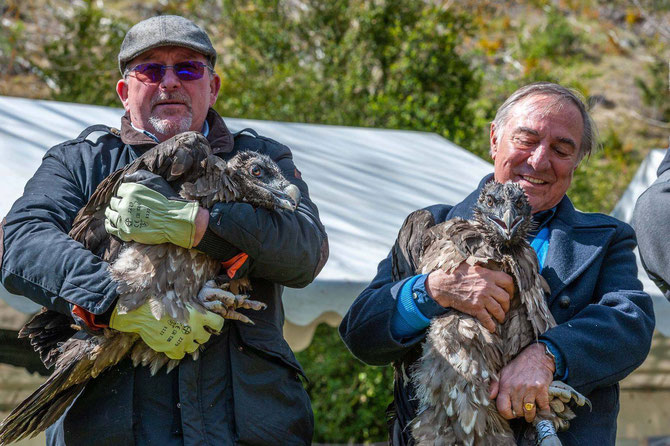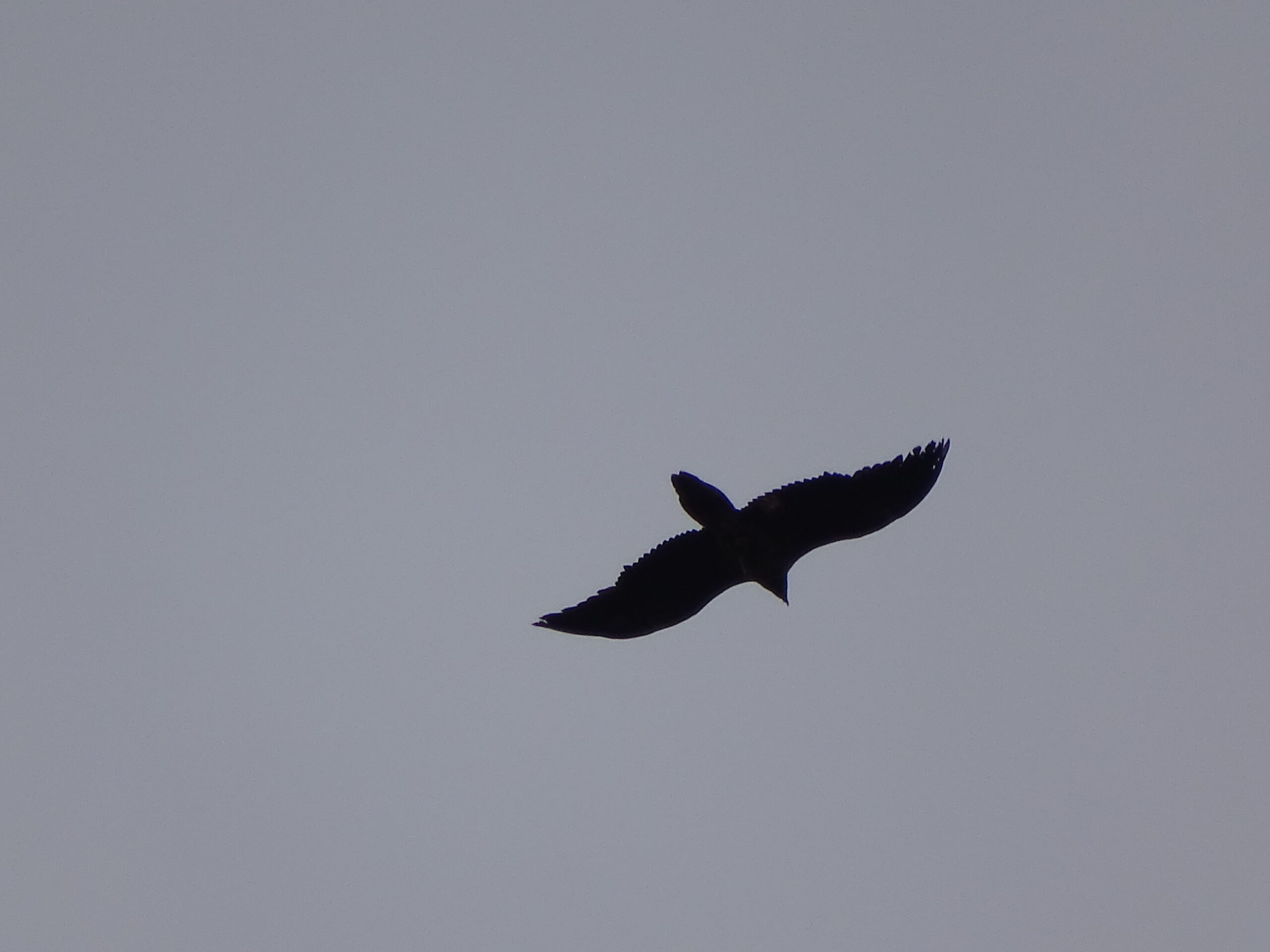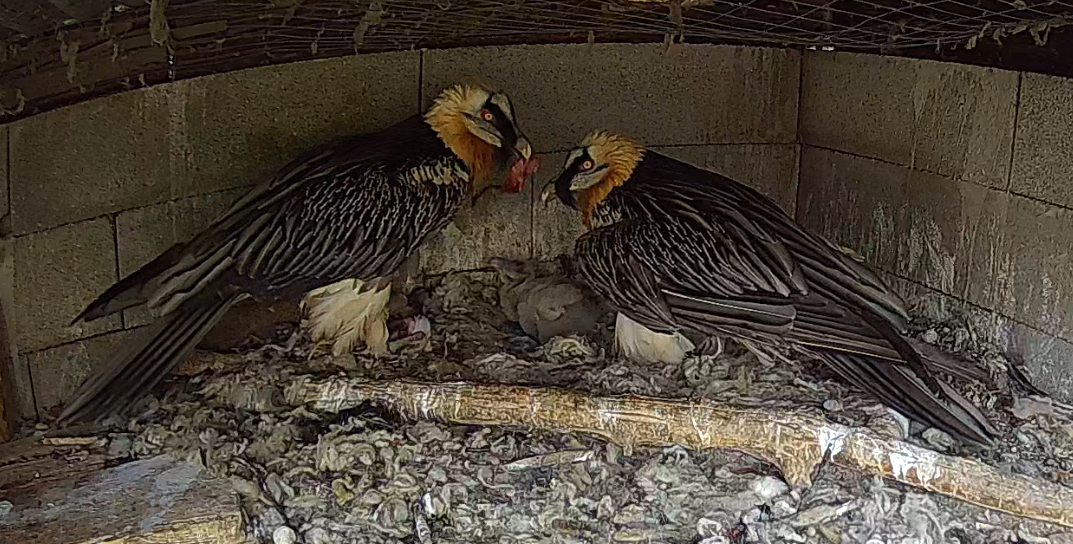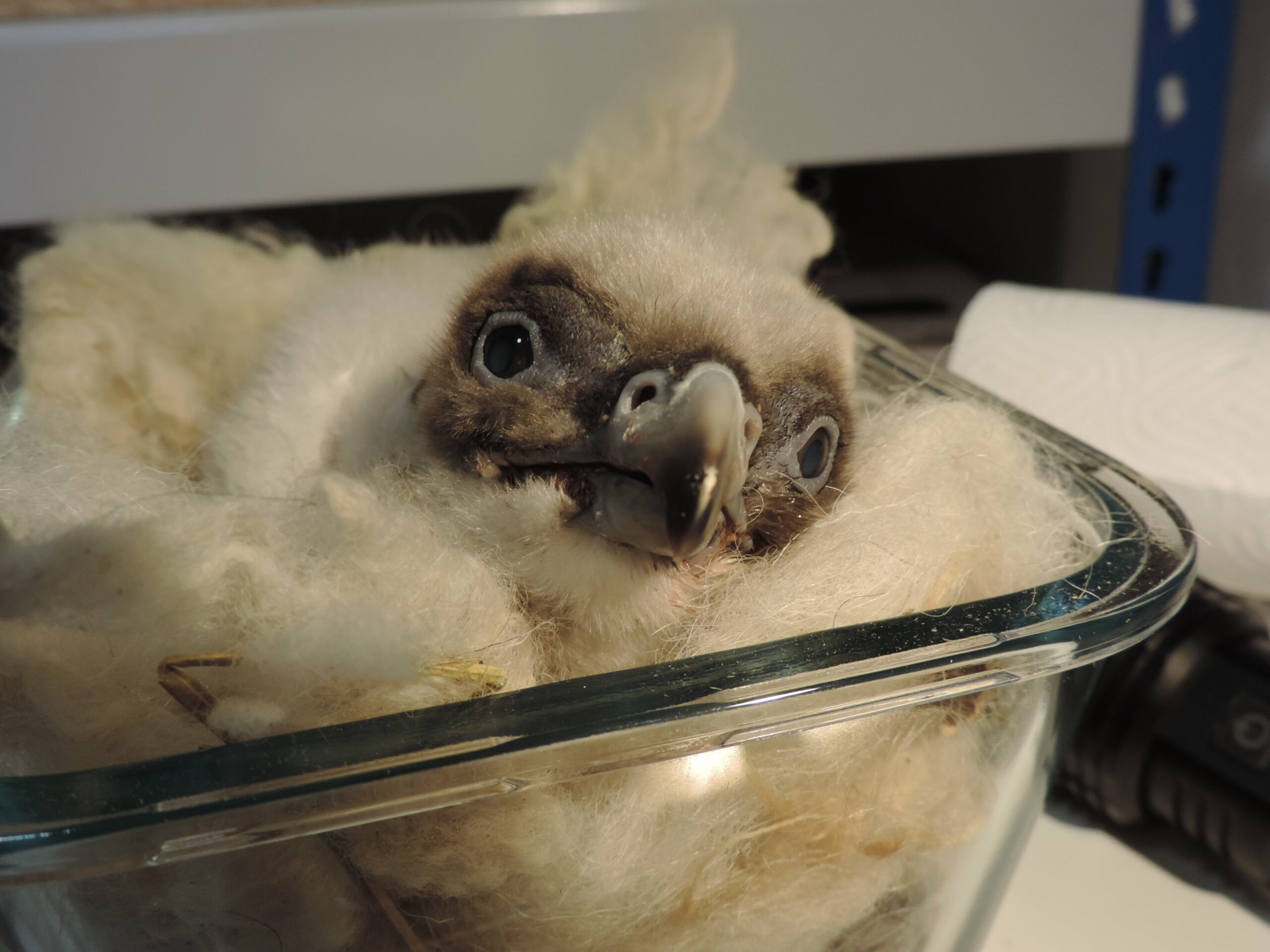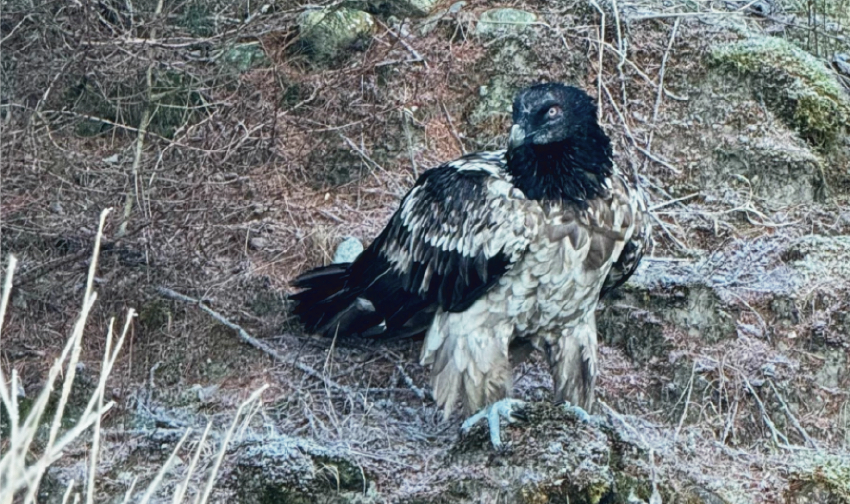
During this year’s long ‘Tour de France‘, cyclists will be rewarded with views from the beautiful French countryside and if lucky enough, encounter some fantastic wildlife, including the Bearded Vulture. VeloElan, a conservation-focused cycling clothing brand, helps raise awareness about some of the animals living in areas where cyclists train and compete, and critical conservation issues associated with them. The first week of the tour explored areas that host the North Atlantic right whale, the Eurasian lynx, and the White stork. You can learn about these animals on VeloElan’s blog.
Bearded Vultures in the Pyrenees
Today the race hits the Central Massif heading towards the Pyrenees! This year, the riders face some of the region’s most iconic peaks, including the brutal and awe inspiring Col du Tourmalet on Saturday. These wild and picturesque mountains host a range of wildlife, including Bearded Vultures – how exciting!
The Bearded Vulture is the rarest of Europe’s vultures, and today it flies only in the Alps, in the Pyrenees, in Andalusia, and isolated island populations in Crete and Corsica. There are around 160 breeding pairs in the Pyrenees, and the total population in Europe (including Turkey and Russia) is estimated at 600 to 1000 pairs.
Securing their future
One of our vulture conservation projects, LIFE GYPCONNECT, aims to connect the populations in the Alps and the Pyrenees, helping to restore the species’ former range. Led by the League pour la Protection des Oiseaux (LPO), the project is releasing captive-bred Bearded Vultures into the wild at sites such as the Parc Naturel Régional des Grands Causses and Parc Naturel Régional des Baronnies Provençales, which will create a core population that will connect the two populations of the species in the Alps and Pyrenees.
This year the project reintroduced nine birds into the wild of France! Five at the Parc Naturel Régional des Grands Causses, two in Parc Naturel Régional du Vercors and two more in the Parc Naturel Régional des Baronnies. The vultures are adapting well in the wild so far, having their first flights and becoming friends with wild vultures.

Releasing nine birds in this one year alone in the same Massif is a fantastic outcome that involves a lot of dedication and collaboration from multiple stakeholders and brings the total released as part of this conservation project to 27!
Monitoring Bearded Vultures
To secure the future of the species, it is also essential to track their movements and survival. Monitoring vultures through GPS transmitters that are attached to their back and through fieldwork observations provide critical data that helps inform more accurate conservation action. The monitoring of their breeding populations in the Alpine range and on Corsica is coordinated by the International Bearded Vulture Monitoring Network (IBM) and the breeding situation is regularly updated and reported to the IBM-database. This year, Bearded Vultures were very busy during the breeding season!
Some interesting facts about Bearded Vultures

Size: 100-115 cm
Weight: 4,5-7,1 kg
Wingspan: 250-285 cm
Life expectancy: up to 40 years in captivity
The Bearded vulture is an unmistakable bird, with black ‘sideburns’, red rings around the eyes and a long wedge-shaped tail. Bearded vultures have black facial markings and black wings, the rest of the head, neck and body are a vibrant rusty orange. This is because Bearded vultures in the wild rub themselves with ferric oxides. Captive born birds are therefore not rusty but white. Juvenile bearded vultures are entirely dark and undergo multiple moultings.
Why are Bearded Vultures important?
Contrary to popular belief, Bearded Vultures do not hunt live prey, and even avoid meat. Their diet consists for 80 to 90% of bleached carcass bones and they are capable of swallowing and digesting bones the size of a sheep’s vertebrae! If bones are too big, that does not stop the birds from having their meals. They drop the bones onto rocks from a height of up to 100 meters to shatter them – hence their name bone breaker in many national languages! This unique eating habit makes Bearded Vultures an essential part of the ecosystem.
LIFE GYPCONNECT

Led by the League pour la Protection des Oiseaux (LPO), the LIFE GYPCONNECT project aims to establish a breeding population of Bearded Vultures in the Massif Central and Department of the Drôme. Releasing captive-bred Bearded Vultures into the wild at sites such as the Parc Naturel Régional des Grands Causses, Parc Naturel Régional des Baronnies Provençales and Parc Naturel Régional du Vercors will create a core population that will connect the two populations of the species in the Alps and Pyrenees. To facilitate movements between the new population and the Alpine and Pyrenean populations the LIFE GYPCONNECT team is creating a network of supplementary feeding stations, and tackling threats such as poisoning, and collision and electrocution with the electricity infrastructure.
International Bearded Vulture Monitoring Network

The International Bearded Vulture Monitoring Network is a unique international collaboration led by the Vulture Conservation Foundation between national parks and non-governmental organisations to coordinate the monitoring activities for European Bearded Vulture populations. Through this network data is collected about the Bearded Vulture in Europe, shared and made available to everyone working for the conservation of the species. The IBM Network also uses this data and comes together to discuss conservation strategies and priorities for this species on an international level. There are currently 15 partners in the IBM Network and three associated organisations.

